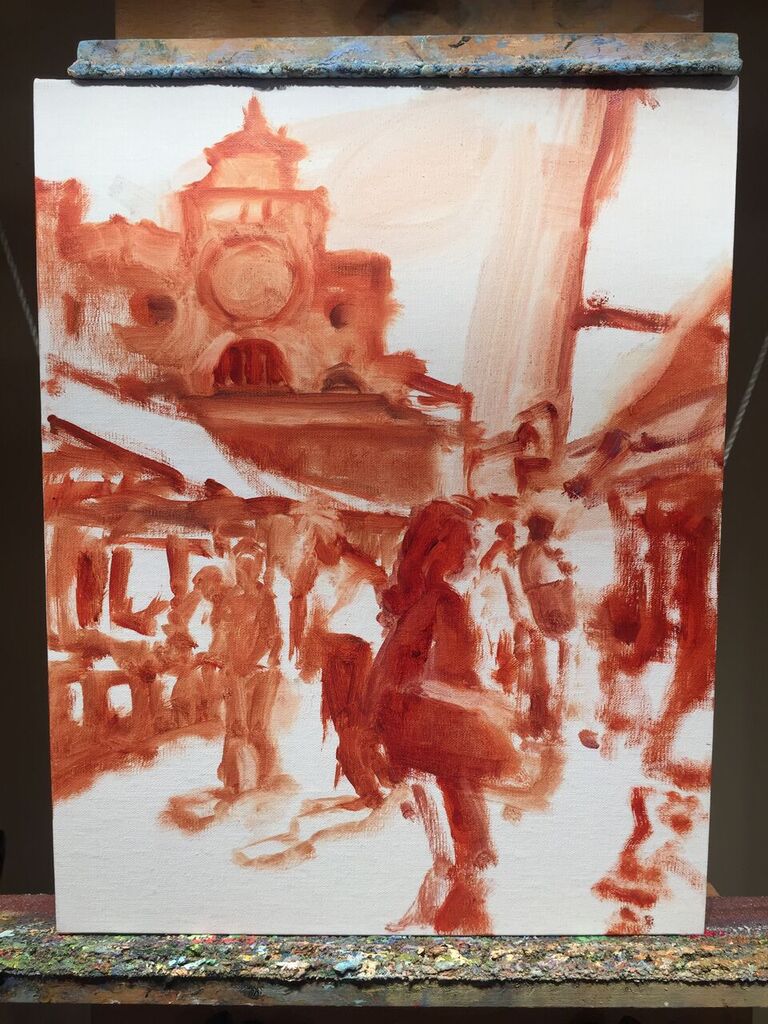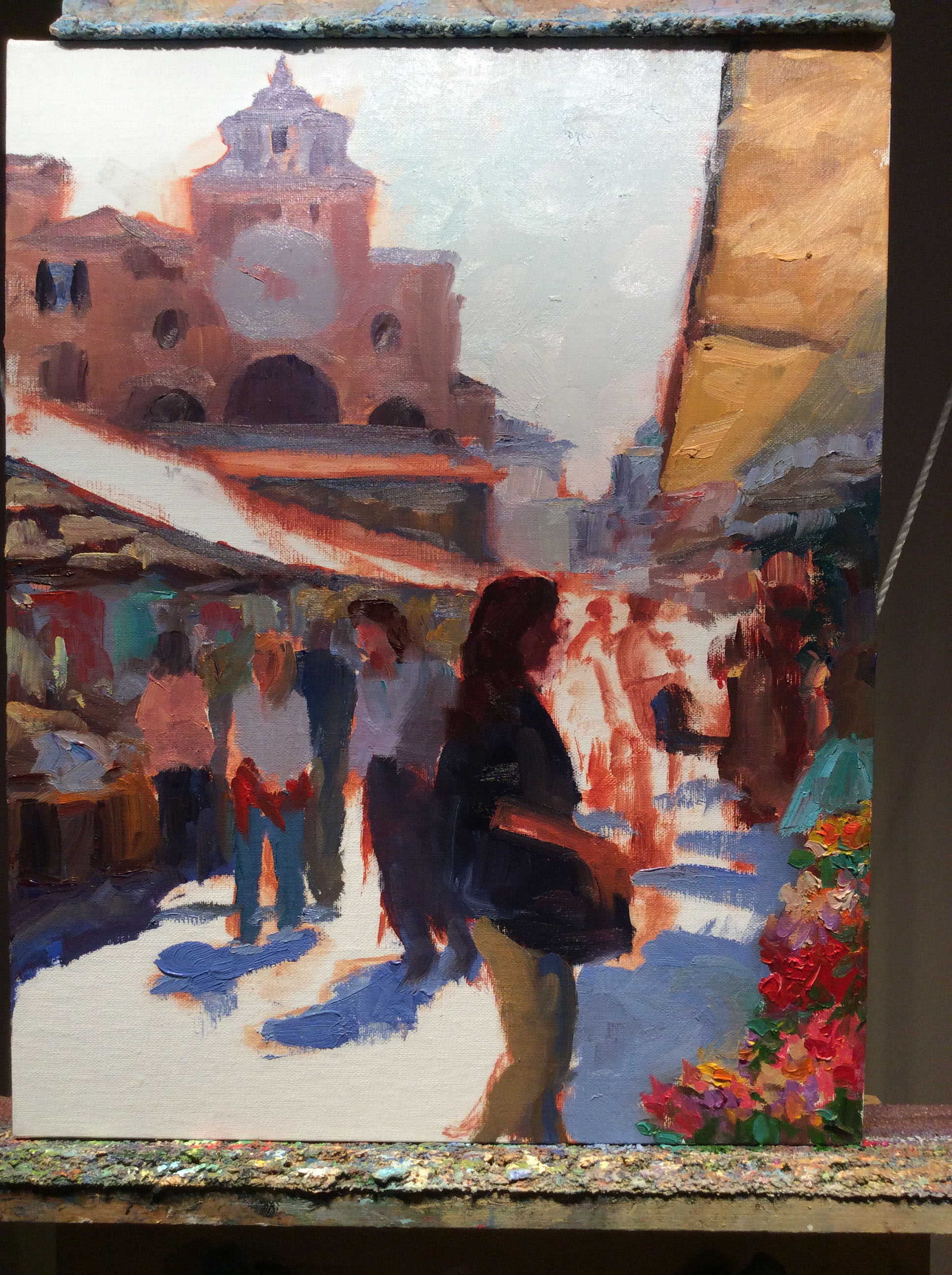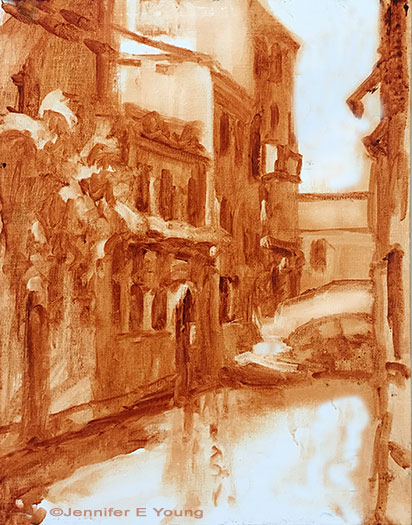Venetian market painting- a progression
/It's taken me a while to get to blogging about this painting because after a disastrous automatic update to Windows 10 my computer died. It has actually been grinding to a halt for a while but it finally kicked the bucket for good last week and I have spent the past however many days trying to relocate my data and reinstall my applications. I am still operating on the bare minimum but at least I can blog again! I won't go on about it but just imagine to appropriate amount of ranting and hair-pulling and insert it here. Aaany-hoo, back to art!
I thought I'd post a little step-by-step demo of this piece because I actually had the forethought to take some progressive shots along the way. This one had a lot of figures and architecture in it, both of which might seem a bit overwhelming at first. But my reference photo also had a really nice value pattern, so by focusing on that first it made my job a lot easier. Here is the composition under way, put to canvas in monochrome with a brush and Gamsol:
Next, I want to think in terms of light and shadow by separating out which parts of the painting are in the light (the light family) from which parts are in shadow ( the shadow family). I will start with the shadow family first. I learned this terminology from Kevin Macpherson, one of my teachers and a phenomenal painter. Phrasing it this way helps me to organize my thoughts and approach, beyond just saying "lights and darks". It's so helpful to see it this way because in actuality some things in shadow are quite light, though they are never lighter than what's in the light family.
I spend a lot of time working in the shadow family because so much of the strength of the painting is here. Only then do I start working in the light.
More stages next time. I hope you'll tune in as I work on lighting this bad boy up!




















